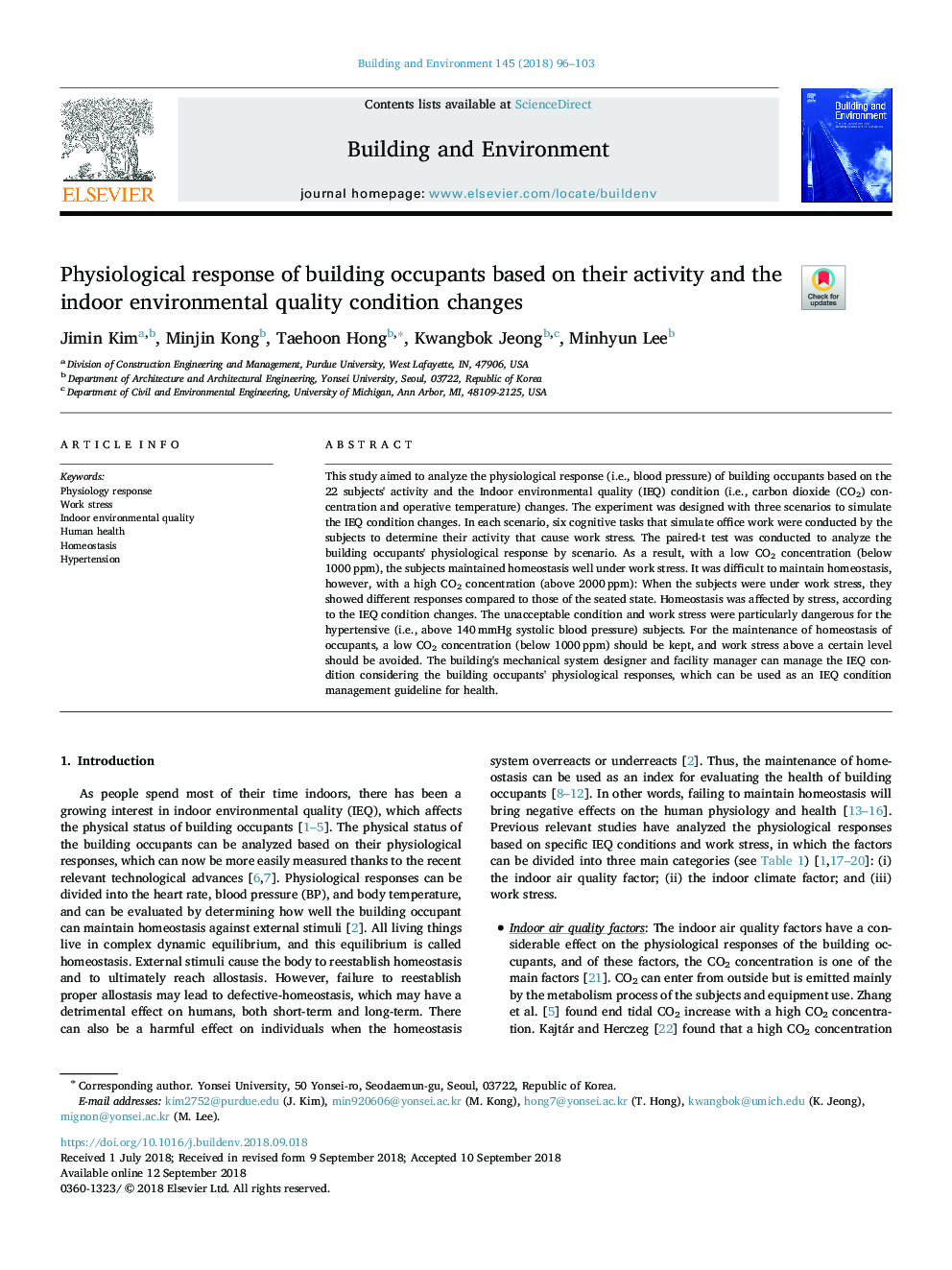| Article ID | Journal | Published Year | Pages | File Type |
|---|---|---|---|---|
| 10150695 | Building and Environment | 2018 | 8 Pages |
Abstract
This study aimed to analyze the physiological response (i.e., blood pressure) of building occupants based on the 22 subjects' activity and the Indoor environmental quality (IEQ) condition (i.e., carbon dioxide (CO2) concentration and operative temperature) changes. The experiment was designed with three scenarios to simulate the IEQ condition changes. In each scenario, six cognitive tasks that simulate office work were conducted by the subjects to determine their activity that cause work stress. The paired-t test was conducted to analyze the building occupants' physiological response by scenario. As a result, with a low CO2 concentration (below 1000â¯ppm), the subjects maintained homeostasis well under work stress. It was difficult to maintain homeostasis, however, with a high CO2 concentration (above 2000â¯ppm): When the subjects were under work stress, they showed different responses compared to those of the seated state. Homeostasis was affected by stress, according to the IEQ condition changes. The unacceptable condition and work stress were particularly dangerous for the hypertensive (i.e., above 140â¯mmHg systolic blood pressure) subjects. For the maintenance of homeostasis of occupants, a low CO2 concentration (below 1000â¯ppm) should be kept, and work stress above a certain level should be avoided. The building's mechanical system designer and facility manager can manage the IEQ condition considering the building occupants' physiological responses, which can be used as an IEQ condition management guideline for health.
Related Topics
Physical Sciences and Engineering
Energy
Renewable Energy, Sustainability and the Environment
Authors
Jimin Kim, Minjin Kong, Taehoon Hong, Kwangbok Jeong, Minhyun Lee,
